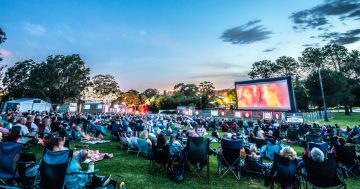
Consultation is open to help shape a strategy for the proposed Wollongong Health Precinct. Photos: Planning NSW.
Building up the services surrounding Wollongong Hospital and improving connectivity across the CBD to help the facility thrive are among the opportunities at the heart of a new Health Precinct Strategy being formed to shape the future of the important hub in Illawarra.
The community is being urged to have a say in the creation of a new place-based approach to the region’s health services, with a discussion paper released as the starting point to initiate the process that will guide the area’s growth.
“The hospital is very important from a patient perspective, from a visitor perspective and from a staff perspective but it can’t be an island in the middle of Wollongong,” Planning Minister Paul Scully said.
“What we want to look at is how we can better connect that precinct with transport, how we can better connect it with the CBD, how we can better integrate housing and associated clinical services outside the hospital setting with the hospital itself so there’s a more seamless flow of people, ultimately to the benefit of patients and staff.”
The proposed precinct sits on Hospital Hill, which runs from the train line in the east to Matthew Street in the west, and includes a few streets both north and south of the public hospital.
According to the discussion paper, there are more than 1600 dwellings and about 3500 residents currently living in the precinct area, with around 6 per cent of residents requiring assistance for core activities due to factors such as disability, long-term health conditions or old age, and about 350 residents working in the healthcare sector.
More than 4000 jobs in the precinct are attributed to the healthcare sector, with 3000 of those in the hospital itself.
The precinct contributes more than $900 million in economic output from the collective industries in the area, such as health care, retail, public administration, construction, real estate services, and education and training.

The proposed boundary for the Wollongong Health Precinct outlined in the discussion paper.
But the region’s growing and ageing population is expected to increase pressure on the local health system, with one in four people from the Illawarra Shoalhaven to be aged 65 or more by 2041.
Creating ”an urban environment that supports the social health of the community, and that can house, heal, and engage the ageing population” is one of the opportunities outlined in the document to address that issue, as is dealing with the evolving needs of the community by facilitating ”greater investment in partnerships between key stakeholders and organisations, such as primary care and other health service providers, to promote knowledge sharing and innovation in medical research practice”.
Other key challenges that need to be addressed include the limited carparking and access to critical health care.
“Parking will be a perennial issue around any health facility but importantly, we have continued the Gong Shuttle, in which the most popular stop on the route is the hospital,” Mr Scully said.
“That’s why the transport element is so important, so we can better connect people at the station to the hospital through bus services and other transport options that might be thought of into the future.
“It may be that there’s a desire from people that there be an ‘arrive and go’-type transport service or a shuttle service at various points around the CBD that allows people to use other transport options but not park right outside the hospital, so these are some of the suggestions that could come up as part of this consultation.”
Higher-density living options, including affordable housing, are also set to be explored, particularly for key workers.
“We’ve also got to look at how we better integrate the physical asset of a hospital with the housing needed for the staff to run it, ranging from the cleaners and security staff right through to specialist services,” Mr Scully said.
Wollongong Hospital has 70,000 admissions annually, with a further 25,000 expected across the region each year by 2031.
But Mr Scully said the wrap-around care beyond the hospital visit also needed to be explored in the precinct strategy.
“If you take, for instance, the cardiothoracic care that we were able to secure a couple of years ago and start in Wollongong, part of that is having specialist doctors and nurses very close to where the patients are post-op, so that has an accommodation dimension to make sure people are around or nearby,” he said.
“We’ve got to take into account that yes, what happens in an operating theatre or in a ward is critically important in the hospital, but it’s also what happens around it to make sure that some of those services are nearby.”
The government is now seeking feedback from residents within the precinct, and people who connect with the area, to grasp their priorities and ideas for the development of this strategy.
Consultation will be open until February 2024, with the following Department of Planning consultation sessions:
- 30 January: 5:30 – 7 pm, online via Microsoft Teams (Targeted landowner session)
- 1 February: 4:30 – 6 pm, online via Microsoft Teams
- 6 February: 4:30 – 5:30 pm, Sage Hotel, Wollongong (Targeted landowner session)
- 6 February: 5:30 – 7 pm, Sage Hotel, Wollongong
- 8 February: 5:30 – 7 pm, online via Microsoft Teams.
A draft strategy will be prepared next year to go on public exhibition between October and November 2024 before being finalised and implemented from 2025.
To read the discussion paper and have your say, visit the NSW Department of Planning website.


















